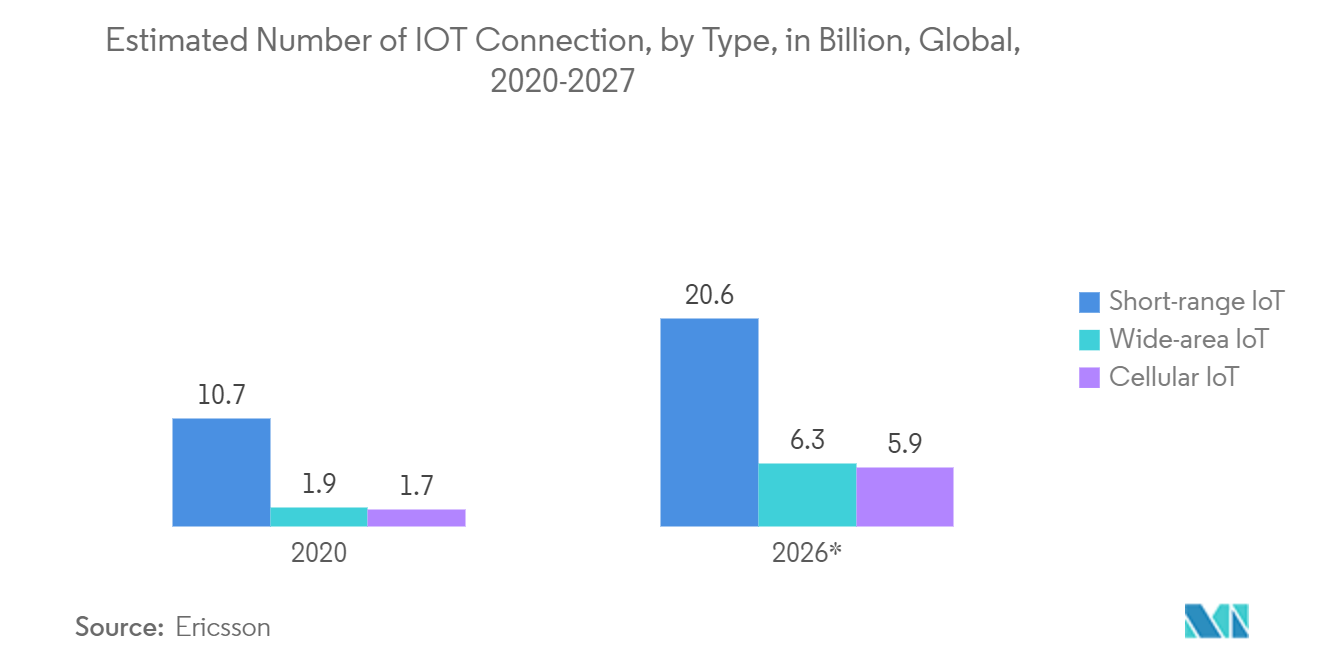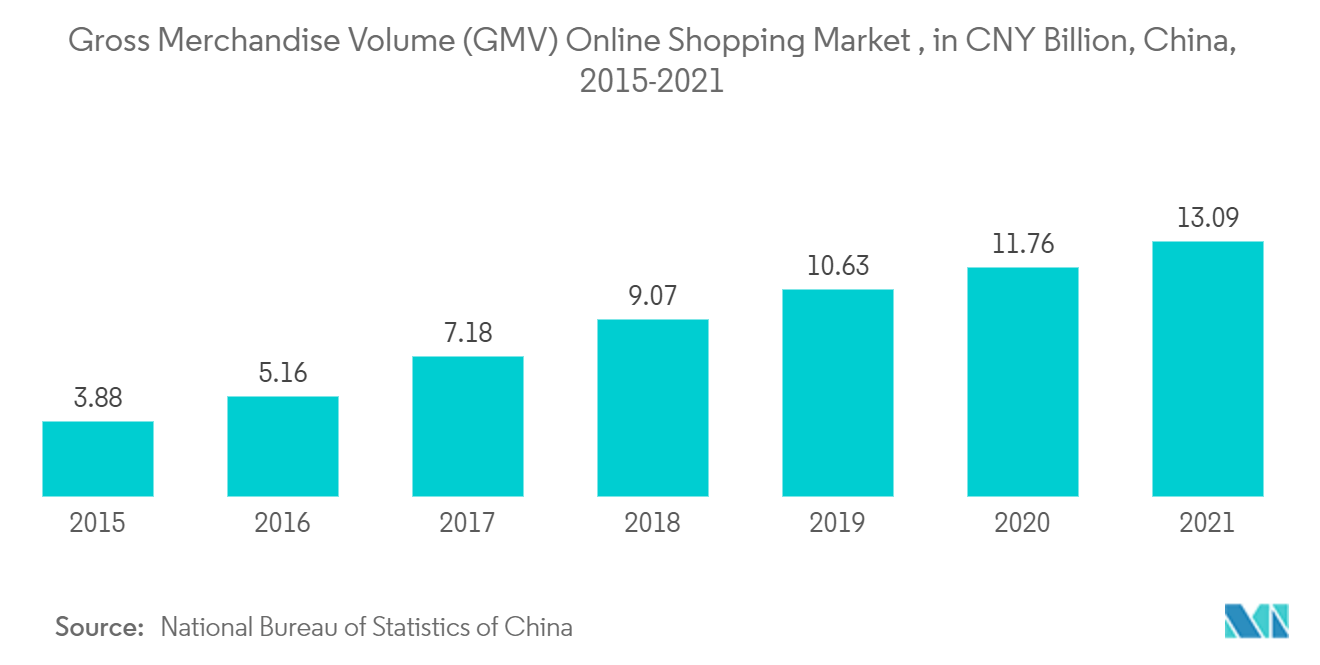Market Trends of Asia Pacific B2B E-commerce Industry
This section covers the major market trends shaping the APAC B2B E-commerce Market according to our research experts:
Advancement in Technologies Plays a Significant Role in Market Growth
- Dependence on data and analytics will drive the total future shopping experience, loyalty programs, and payment systems. The use of demographic, geographic, and situational data will increase as consumer expectations evolve to make the greatest marketing choices. The importance of cloud computing and storage technology, network optimization, and predictive analytics is swiftly rising from a nice-to-have to a need. Implementing cutting-edge technology is accelerating digital transformation, necessitating new procedures and abilities from managers and executives in the industry.
- IoT gives businesses a greater understanding of the order fulfillment process so they may better serve customers who make more online purchases. IoT technology enables online businesses to track consumer orders from when they are placed until they are delivered to their doorsteps. Due to management systems, retailers can track every inventory item, no matter where it is. Using cloud-based technologies like GPS and RFID, it is possible to access information like traffic conditions, weather, location, and employee IDs (Radio-Frequency Identification).
- Online merchants can use artificially intelligent technologies called E-commerce chatbots to interact with clients at every stage of the buying process. These E-commerce chatbots are used for conversational marketing and addressing customers' concerns regarding the product before they make the purchase. E-commerce stores can use these chatbots to answer questions about their products directly on the website or even on other messaging platforms like WhatsApp, Instagram, Facebook Messenger, etc. These bots are utilized for conversational commerce and intelligently and immediately offer post-sale support without involving a live customer service representative.
- According to GSMA Intelligence, China had over 939.8 million internet users as of January 2021, while India came in second with 624 million subscribers. In addition to dominating the Asia Pacific region, China and India had the most internet users worldwide.Such huge internet users will provide a significant opportunity for the studied market to grow.
- E-commerce companies are increasingly seeking distribution and inventory management systems that are self-learning, predictive, adaptive, and intelligent, which are known as cognitive supply chains. They result in improved, personalized customer service and decreased inventory. These systems can also mitigate risk, improve insight and performance, and increase transparency.

China Holds Prominent Share of the Market
- In the largest Chinese cities, it is uncommon to see someone paying with cash. Online and offline daily life now both commonly use online payment systems. The same thing progressively occurs in B2B E-commerce. A significant component of the B2B E-commerce experience will soon be the mobile wallet. It is not merely a new payment option; it is on the verge of becoming a key element of a seamless B2B shopping experience. China has created an entire ecosystem of payment alternatives, which includes conventional bank transfers, mobile payment options, and sophisticated solutions that integrate payments and financing, and guarantee the efficient movement of cash for both sides.
- The gross merchandise value of Alibaba's China consumer-facing companies, including those in the local consumer services, digital media, and entertainment categories, was about CNY 7,976 billion (USD1,258 billion) in 2021. After de-duplication, the total yearly active consumers of its consumer-facing businesses in China reached a historic milestone of over 1 billion, up roughly 113 million years over year, and surpassed its fiscal year 2022 target.
- B2B e-commerce is crucial to a nation's digitalization plan and can include more than just online business transactions. By eliminating corporate overcapacity and enhancing manufacturing capacities to fulfil the always changing and expanding demands for better products, data acquired can improve business operations.
- In June 2022, a cross-border B2B platform called Joybuy was introduced by JD Worldwide, the international division of JD.com (Jingdong). Through the company's chosen supplier network, Joybuy links international retailers with top-notch Chinese factories. JD's B2B platform Joybuy will primarily cater to foreign clients, including vendors on e-commerce marketplaces, direct-to-consumer (DTC) sellers, and small- and medium-sized stores.
- In China, having a quality website is crucial. A well-designed website is becoming increasingly important to distributors, buyers, and business owners. Clear offerings, simple navigation, and persuading information are essential. Everything on your website should highlight the benefits of engaging with your company. It is advisable to translate website material into Mandarin and include Chinese-specific images. Such websites will drive web traffic for B2B E-commerce businesses which may turn into sales.

